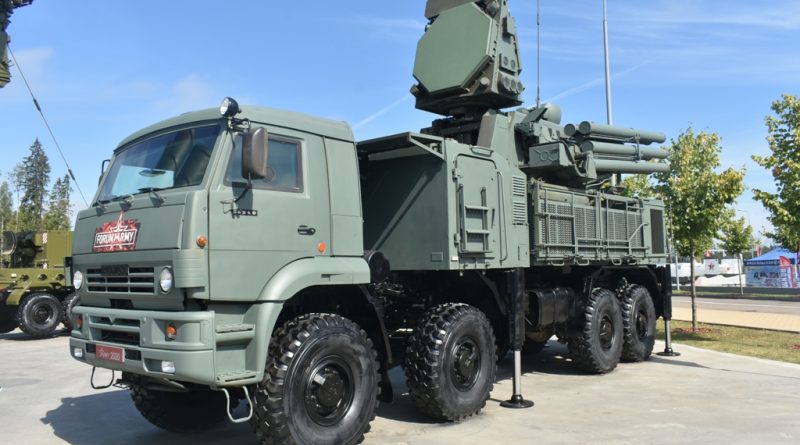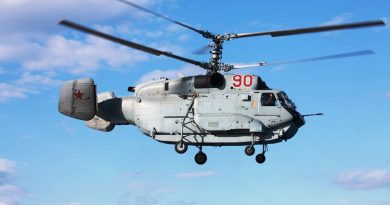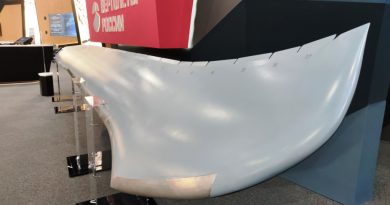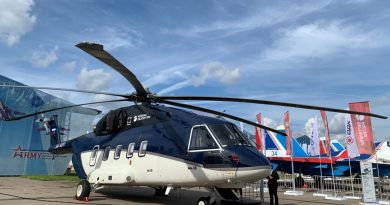Army 2020: Russian industry to showcase Pantsir family of SPAAGMs
By Dmitry Fediushko
The Russian defence industry is set to showcase the full range of the Pantsir-S1 (SA-22 ‘Greyhound’) self-propelled anti-aircraft guided missile (SPAAGM) and surface-to-air missile (SAM) systems during Army 2020 defence exhibition to be held in Kubinka between 23 and 29 august, an industrial source told European Defence Review on the eve of the show.
“The full range of the members of the Pantsir family will be on demonstration at the show,” said the source.
The Russian industry pays specific attention to the development of the Pantsir-family air defence assets. As of mid-2020, this family comprises three members, namely, the baseline Pantsir-S1 self-propelled anti-aircraft guided missile system, the upgraded Pantsir-S1M SPAAGM, and the Pantsir-SA surface-to-air missile system that is intended for the Arctic region.
Several years ago, the basic Pantsir-S1 passed through an update. The current variant of the weapon has retained the original armament suite integrating two 2A38M 30 mm twin-barrel anti-aircraft cannons and 12 ready-to-use SAMs. The kinetic component of the weapon system produces a relatively high rate of fire – up to 5,000 rounds per minute, the muzzle velocity of which reaches 960 m/s. The gun was developed with combat utility in mind: the 2A38M fires almost all types of 30×165 mm cartridges, including high-explosive tracer and high-explosive incendiary. The service life of the cannon approaches 8.000 shots, so each weapon is capable of maintaining continuous fire for a minute and a half. The manufacturer claims the 2A38M destroys aerial targets at an altitude of up to 3 km and at a distance of up to 4 km.
The Pantsir-S1’s SAM engages various aircraft at an altitude of up to 15 km and at a distance of up to 20 km. Each munition weighs approximately 74.5 kg and carries a 20-kg warhead fitted with both contact and proximity fuses. The missile produces a top speed of 1,300 m/s and withstands a 32g overload.
The Pantsir-S1’s sensor suite combines a target detection station, a multifunctional radar, and an optical-electronic subsystem. The baseline vehicle simultaneously engages four aerial targets flying at 1,000 m/s. It is controlled by a three-strong crew and counters aerial threats both on the move and at halt.
According to KBP, a typical Pantsir-S1 battery includes up to six combat vehicles, a command-and-control (C2) mobile station, and logistics support systems. It should be mentioned that the Pantsir-S1, which was originally developed as a mobile system, now features four configurations: the standard one on the KAMAZ-6560-family truck, a tracked chassis-based variant with improved cross-country capabilities, a heavy vehicle mounted on the second carriage of a two-unit tracked articulated platform, and a stationary combat module.
At last year’s Army defence show, the industry unveiled the modernised Pantsir-S1M SPAAGM. Not much is known about the modified system; however, according to the military, its target engagement range has been extended to 30-40 km. The system is mounted on the new K-53958 Tornado heavy 8×8 truck carrying a cabin protected against small arms and fragments. The weapon features four guidance channels.
The Pantsir-SA is the latest addition to the Greyhound family. The Arctic system is based on a two-unit articulated carrier, with the combat unit employing the rear wagon.
The basic Pantsir-S1 was not designed as an air defence asset to shoot UAVs and small aerial targets, its original task being to counter traditional threats, namely, fixed- and rotary-wing aviation and cruise missiles. Since the system’s development in the early 2000s, the battlefield has dramatically changed, and the Greyhound now faces small-size combat UAVs (UCAVs) and miniaturized munitions. Several MAN SX45-based Pantsir-S1 were reported to have been used during an ongoing struggle in Libya; according to Turkish media outlets and social networks, Baykar Makina Bayraktar TB2 managed to destroy some eight Pantsir-S-1 SPAAGMs, of which five were at halt with their radars off and at least one was out of ammo. These cases apparently show obvious combat mismanagement: the Greyhound requires trained and vigilant crew, as well as any modern weapon systems. When used as a part of a multilayered and multifaceted air defence network, the Pantsir-S1 reveals itself as an efficient device: when repelling a US coalition-led air strike in April 2018, the SPAAGMs of the Syrian governmental forces managed to shoot down 23 of 25 Tomahawk-family cruise missile. However, the Tomahawk is a large aerial target; shooting down a UCAV (or a small air-launched munition) is a far more difficult task. The Pantsir-S1M seems to be intended for this type of tasks. The modernised Pantsir-S1M vehicles, which participated in the Victory Day parade held on 24 June in Moscow, were carrying new four-cell cassettes in place of one of the missiles. These munitions are reported to target non-expensive and low-tier targets such as quadcopters, small unmanned aerial vehicles, and various munitions. Moreover, the basic vehicle is also fitted to catch drones and quadcopter: in January 2020 Designer General of the Pantsir-S1 Valery Slugin told the TASS news agency that the radar suite of the system had become more precise and capable of detecting UAVs.
It is noteworthy that the Russian military intensively uses the Greyhound during various exercises. The basic Pantsir-S1 is often used as an air defence asset to protect the S-400 Triumph (SA-21 Growler) long-range air defence system against simulated low-tier aerial threats and combat aviation during exercises. The military often says that the crews of the Pantsir-S1s are trained to repel air attacks of compact drones. Moreover, in early August, the Ministry of Defence (MoD) reported firing tests of the Pantsir-SA in the Arctic.
Unlike most Russian-made air defence weapons, the Pantsir-S1 allows its crew to engage soft-skin and light armoured targets. The system’s sensor suite provides it with a capability to use both guns and SAMs to tackle ground threats.
Photo courtesy Dmitry Fediushko




